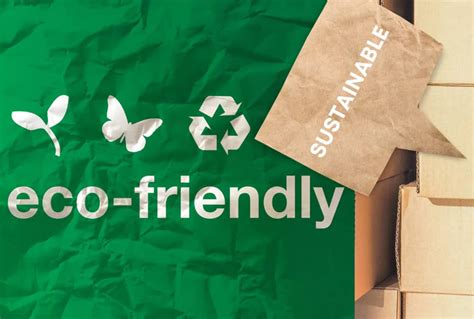Introduction

In today’s increasingly environmentally conscious landscape, consumers are demanding more sustainable products and practices from businesses. As such, companies are prioritizing eco-friendliness to meet this rising demand and secure a competitive advantage. This article explores the drivers behind eco-friendliness, its benefits, and strategies for businesses to stay ahead of the curve.
Drivers of Eco-friendliness
1. Consumer Demand:
According to a study by Nielsen, 81% of global consumers believe it is important for companies to reduce their environmental impact. This demand is particularly pronounced among younger consumers, with 91% of Gen Z saying they want to buy products from sustainable brands.
2. Regulatory Compliance:
Governments worldwide are implementing regulations and policies to reduce carbon emissions and promote sustainability. Businesses must comply with these regulations to avoid penalties and maintain their reputation.
3. Cost Savings:
Eco-friendly initiatives can often result in cost savings through reduced energy consumption, waste minimization, and improved resource utilization.
Benefits of Eco-friendliness
1. Enhanced Brand Reputation:
Companies that prioritize eco-friendliness build a positive brand image and attract environmentally conscious customers. This can lead to increased sales, customer loyalty, and improved stakeholder relations.
2. Competitive Advantage:
In a highly competitive market, eco-friendliness can be a key differentiator. Businesses that embrace sustainability can set themselves apart from competitors and attract environmentally driven consumers.
3. Reduced Environmental Impact:
Eco-friendly practices reduce a company’s carbon footprint, minimize waste, and conserve natural resources. This contributes to a more sustainable planet and a healthier future for generations to come.
Strategies for Eco-friendliness
1. Sustainable Sourcing:
Use environmentally friendly suppliers and materials to minimize the impact on the ecosystem.
2. Energy Efficiency:
Implement energy-saving measures, such as LED lighting, energy-efficient appliances, and renewable energy sources.
3. Waste Reduction:
Develop strategies to reduce, reuse, and recycle waste to minimize landfill waste and conserve resources.
4. Sustainable Packaging:
Use biodegradable, recyclable, or reusable packaging to reduce plastic consumption and waste.
Future Trends and Innovations
1. Circular Economy:
The transition to a circular economy involves designing products and materials for reuse and recycling, minimizing waste and promoting resource efficiency.
2. Biodegradable Materials:
The development of biodegradable materials, such as plant-based plastics, is gaining momentum as an alternative to traditional plastic packaging and products.
3. Smart Technologies:
Artificial intelligence and other smart technologies can help businesses optimize sustainability efforts, such as energy consumption and waste management.
Customer Engagement and Motivation
Asking the Right Questions:
Engage customers through surveys, customer feedback, and social media to understand their eco-friendly preferences and address their concerns.
Addressing Pain Points:
Identify and address customers’ pain points related to environmental sustainability, such as plastic waste or carbon emissions.
Inspiring Motivation:
Share success stories, case studies, and the impact of eco-friendly initiatives to inspire customers and motivate them to make sustainable choices.
Conclusion
Eco-friendliness is no longer an option but a necessity for businesses in 2025 and beyond. By embracing sustainable practices, companies can meet consumer demand, comply with regulations, reduce costs, enhance their brand reputation, and gain a competitive advantage. By asking the right questions, addressing pain points, and inspiring motivation, businesses can engage customers and create a more sustainable future.
Tables
Table 1: Eco-friendly Strategies by Industry
| Industry | Strategies |
|---|---|
| Retail | Sustainable packaging, waste reduction, energy efficiency |
| Manufacturing | Sustainable sourcing, energy efficiency, water conservation |
| Transportation | Fuel-efficient vehicles, electric mobility, sustainable logistics |
| Food and Beverage | Organic farming, biodegradable packaging, sustainable sourcing |
Table 2: Benefits of Eco-friendliness
| Benefit | Description |
|---|---|
| Enhanced Brand Reputation | Positive brand image, increased sales, customer loyalty |
| Competitive Advantage | Differentiation, market share, innovative products |
| Reduced Environmental Impact | Lower carbon footprint, waste minimization, resource conservation |
Table 3: Motivating Customers Towards Eco-friendliness
| Motivation Factor | Description |
|---|---|
| Awareness and Education | Providing information on environmental issues and sustainable practices |
| Emotional Appeal | Connecting with customers’ values and ethical concerns |
| Financial Incentives | Offering discounts, loyalty rewards, or tax credits for eco-friendly purchases |
Table 4: Future Trends in Eco-friendliness
| Trend | Description |
|---|---|
| Circular Economy | Designing products for reuse and recycling, minimizing waste |
| Biodegradable Materials | Alternative to traditional plastic packaging and products |
| Smart Technologies | Optimization of sustainability efforts, such as energy consumption and waste management |





















